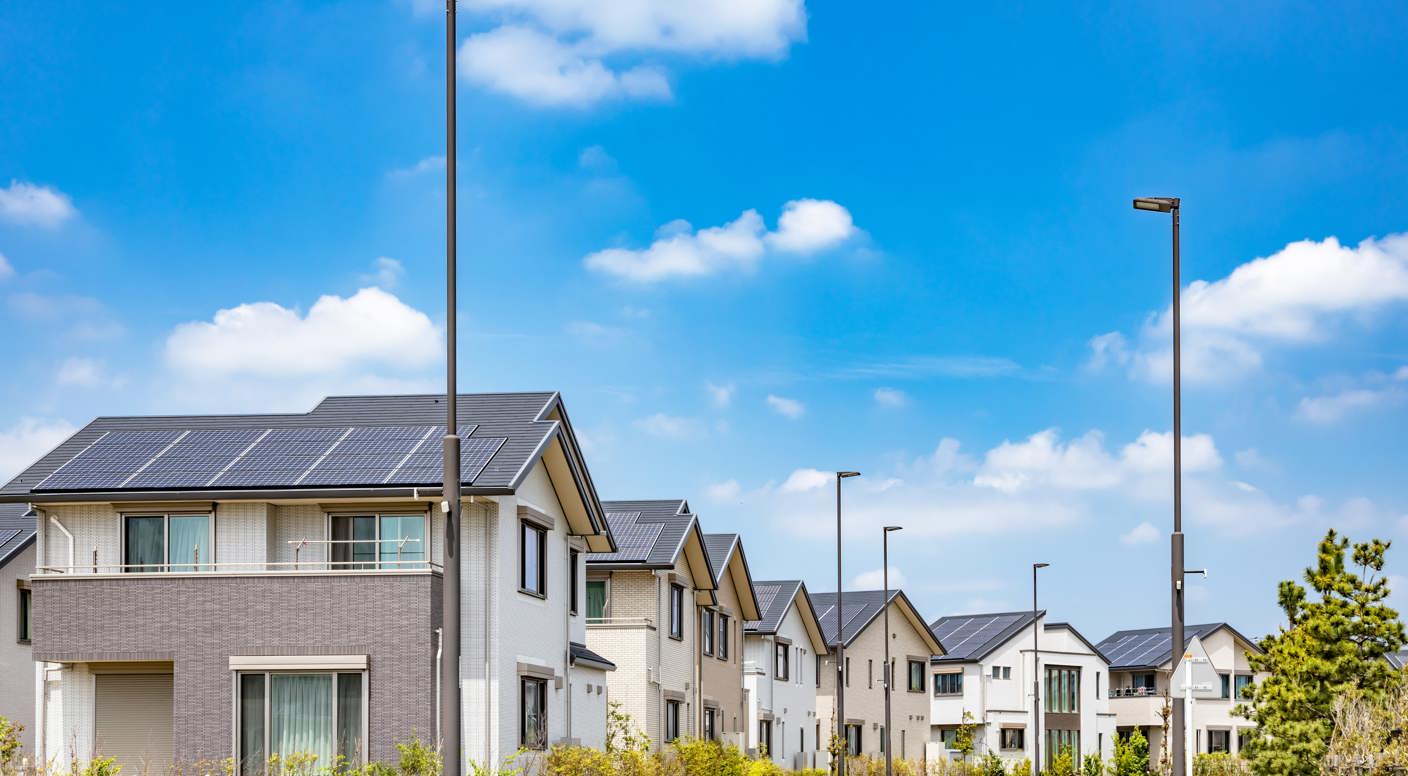An accurate property valuation you can trust
We'll help you to find the value of your property, so you can find a buyer or tenant as soon as possible.
Enter your details below to book a professional appraisal.
As we move into the 21st century, the concept of green homes is rapidly evolving, driven by the urgent need for sustainable living. The next decade promises significant advancements in eco-friendly materials, energy-efficient designs, and sustainable practices, fundamentally transforming how we build and inhabit our homes. Let's explore the key trends and innovations that will shape the future of green housing.

Eco-Friendly Materials
The future building materials are set to differ from those used today radically. Innovations in this area are focused on reducing the environmental impact of construction and enhancing the sustainability of homes.
Recycled and Upcycled Materials
Builders are increasingly turning to recycled and upcycled materials. These include everything from reclaimed wood and recycled metal to innovative products like bricks made from construction waste and tiles created from discarded glass. Using these materials reduces waste and lowers the carbon footprint of new homes.
Biodegradable and Renewable Materials
Developing biodegradable materials, such as mushroom-based insulation and plant-based plastics, is gaining momentum. These materials decompose naturally, reducing landfill waste. Additionally, renewable materials like bamboo, which proliferates and requires minimal resources, are becoming popular alternatives to traditional building materials.
Advanced Composites and Smart Materials
Advances in material science are leading to the creation of composites that offer superior strength, durability, and thermal performance. Smart materials that can change properties in response to environmental conditions, such as self-healing concrete and phase-change materials for temperature regulation, are also emerging.
Energy-Efficient Designs
Energy efficiency is at the heart of sustainable housing. Future homes will incorporate cutting-edge designs and technologies to minimise energy consumption and harness renewable energy sources.
Passive House Standards
The passive house (Passivhaus) standard, emphasising airtight construction, high-performance windows, and continuous insulation, is becoming more widespread. These homes require minimal energy for heating and cooling, significantly reducing their environmental impact.
Integrated Renewable Energy Systems
Solar panels, wind turbines, and geothermal systems will become standard features in green homes. Advances in energy storage, such as improved battery technologies, will allow homeowners to store and utilise renewable energy more effectively, ensuring a consistent power supply.
Smart Home Technology
The integration of smart home systems will enhance energy efficiency. Smart thermostats, lighting systems, and appliances that can be controlled remotely and programmed to operate during off-peak hours will optimise energy use. Additionally, energy management systems that monitor and adjust energy consumption in real time will become more sophisticated.
Sustainable Practices
Sustainable living goes beyond the materials and technologies used in construction. It encompasses a holistic approach to reducing the environmental impact of our homes throughout their lifecycle.
Water Conservation
Future green homes will prioritise water conservation through low-flow fixtures, rainwater harvesting systems, and greywater recycling. Landscaping with native, drought-resistant plants will also reduce water usage.
Waste Reduction
Sustainable waste management practices will be standard, such as composting organic waste and separating recyclables. Construction waste will be minimised through careful planning and using modular and prefabricated components that can be easily disassembled and reused.
Healthy Living Environments
Creating a healthy indoor environment will be a key focus. This includes using non-toxic, low-emission materials to improve indoor air quality, incorporating ample natural light to reduce reliance on artificial lighting, and designing homes that promote natural ventilation.
Community and Urban Planning
The impact of sustainable living extends beyond individual homes to the broader community and urban environment.
Eco-Villages and Co-Housing
These community-based living arrangements emphasise shared resources, communal spaces, and collaborative lifestyles. Eco-villages often incorporate organic farming, renewable energy systems, and sustainable building practices.
Green Infrastructure
Urban planning will increasingly integrate green infrastructure, such as green roofs, urban forests, and permeable pavements, to manage stormwater, reduce heat islands, and improve air quality.
Transportation Solutions
Sustainable transportation options, including electric vehicle charging stations, bike lanes, and public transit access, will be integral to green housing developments. Reducing reliance on fossil fuels for transportation will be a key component of sustainable living.
The future of green homes is bright, with myriad innovations set to revolutionise how we build and live. By embracing eco-friendly materials, energy-efficient designs, and sustainable practices, we can create homes that minimise environmental impact and promote healthier, more resilient communities. As these trends continue to develop, the next decade will be pivotal for advancing sustainable living and ensuring a greener, more sustainable future for all.
Related Posts
Landlords and the Renters' Rights Bill - A Guide from Farrell Heyworth
How can I regain possession of my property now that I can't use Section 21 "no-fault" evictions? Section 21 is…
The Renters' Rights Bill Explained - A Complete Guide for Tenants in England
When will the Renters' Rights Bill become law, and will the changes happen simultaneously or in stages? The Renters' Rights…
Walking for Wellbeing: How Farrell Heyworth is Stepping Up for Health and Community
The Health Benefits of Walking For Individuals Improves cardiovascular health, reducing the risk of heart disease. Boosts mood and reduces…



